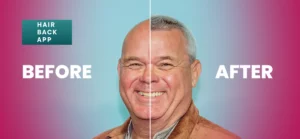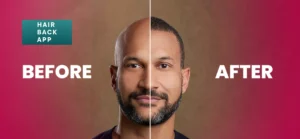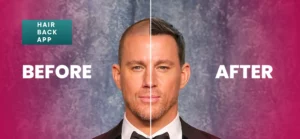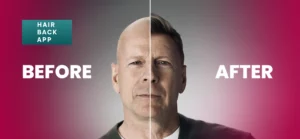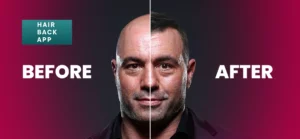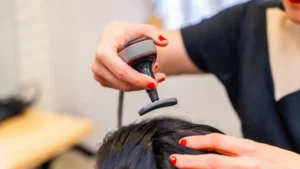Hair transplant role of donor quality has become a crucial factor in determining the success of hair restoration procedures. Hair transplants provide a more permanent and natural-looking solution for those experiencing hair loss.
However, the success of a hair transplant largely depends on the hair transplant role of donor hair. This cannot be overstated, as it significantly influences the overall outcome and longevity of the transplant.
My name is Emma Wright, your resident hair restoration specialist. Today we’ll be discussing Hair transplant role of donor quality. In this article, we will explore how the hair transplant role of donor hair quality affects transplant success and discuss the factors that influence donor hair health.
Understanding Hair Transplants
Before delving into the hair transplant role of donor hair quality, it is important to understand the basics of hair transplants. A hair transplant is a surgical procedure that involves transferring hair follicles from one part of the body, known as the donor area, to the balding or thinning area, known as the recipient area. The most common donor area is the back of the scalp, as this region typically has hair that is resistant to male pattern baldness.
There are two primary methods of hair transplantation namely Follicular Unit Transplantation (FUT) and Follicular Unit Extraction (FUE). FUT involves removing a strip of scalp from the donor area, from which individual follicular units are dissected and transplanted. FUE, on the other hand, involves the extraction of individual follicular units directly from the donor area using a punch tool.
The choice between these methods depends on various factors, including the patient’s hair characteristics, the extent of scarring alopecia, and the surgeon’s expertise, all of which are linked to the hair transplant role of donor hair quality.
The Importance of Donor Hair Quality
The success of a hair transplant is highly dependent on the hair transplant role of donor hair quality. Donor hair quality refers to the characteristics of the hair follicles in the donor area, including their density, thickness, and health. These factors play a crucial role in determining how well the transplanted hair will survive and thrive in the recipient area.
Hair Density and Follicle Count
One of the most critical aspects of the hair transplant role of donor hair quality is the density of hair follicles in the donor area. Hair density refers to the number of hair follicles per square centimeter of scalp. Higher hair density means more hair follicles can be harvested for transplantation, which is particularly important for individuals with extensive causes of hair loss. A higher follicle count allows for a more natural and fuller look post-transplant.
In cases where the donor area has low hair density, the number of available follicles for transplantation is limited. This can result in a less dense appearance in the recipient area, making the transplant less effective. Additionally, over-harvesting hair follicles from a low-density donor area can lead to visible scarring and thinning in the donor region, emphasizing the hair transplant role of donor hair quality.
Hair Thickness and Shaft Diameter
The thickness of the hair shaft is another critical factor that affects the outcome of a hair transplant. Thicker hair shafts create a fuller and more voluminous appearance, making the transplanted hair look denser. Patients with naturally thick hair in the donor area are more likely to achieve a successful and aesthetically pleasing result, underlining the hair transplant role of donor hair quality.
Conversely, individuals with fine or thin hair in the donor area may not achieve the same level of coverage in the recipient area, as each hair strand provides less visual impact. Surgeons often consider hair shaft diameter when planning the transplantation, as it influences the overall density and appearance of the transplanted hair, further highlighting the hair transplant role of donor in achieving a successful outcome.
Hair Curl and Texture
The natural curl and texture of the donor hair can also impact the success of a hair transplant. Curly or wavy hair tends to cover more scalp area compared to straight hair, as it has a greater tendency to overlap and create a fuller look. This characteristic can be particularly beneficial for individuals with curly hair, as fewer grafts may be needed to achieve the desired result. This demonstrates the hair transplant role of donor hair texture in the transplant process.
On the other hand, straight hair may require more grafts to achieve a similar level of coverage, as each hair strand lies flat against the scalp. Surgeons take hair texture into account when planning the number of grafts needed and their placement to ensure a natural and balanced appearance, emphasizing the importance of the hair transplant role of donor hair characteristics.
Hair Color and Contrast with Scalp
The color of the donor hair and its contrast with the scalp color also play a role in the overall appearance of the transplant. Dark hair on a light scalp can create a more noticeable contrast, making thinning areas more apparent. Conversely, hair that closely matches the scalp color can create a more seamless and natural look, even with fewer grafts. The hair transplant role of donor hair color is crucial in achieving a natural-looking result.
Individuals with lighter hair or hair that closely matches their scalp color may achieve a more natural-looking result with fewer grafts, as the contrast is less pronounced. This consideration is important in the planning stages of the transplant, as it influences the number of grafts required and their distribution across the scalp, underscoring the hair transplant role of donor hair quality.

Key Success Factors Influencing Donor Hair Health
The health of the donor hair is paramount to the success of a hair transplant. Several factors can influence the health of the donor hair, including genetics, age, overall health, and hair care practices. Understanding these factors can help individuals and surgeons make informed decisions about how to stop hair loss and hair transplantation, taking into account the hair transplant role of donor health.
Genetic Factors
Genetics play a significant role in determining the quality and health of donor hair. Some individuals are genetically predisposed to have thick, healthy hair, while others may have thinner, more fragile hair. The genetic makeup of an individual influences hair density, thickness, and resistance to hair loss, all of which are critical factors in the success of a hair transplant, further demonstrating the hair transplant role of donor genetics.
Individuals with a family history of strong, healthy hair are more likely to have a better outcome from a hair transplant. Conversely, those with a family history of thinning or fragile hair may face challenges in achieving the desired result. Genetic factors should be considered when evaluating a candidate for hair transplantation, emphasizing the hair transplant role of donor hair quality.
Age and Hormonal Changes
Age is another factor that affects donor hair quality. As individuals age, their hair may become thinner, more brittle, and less dense. Hormonal changes associated with aging, such as a decrease in androgens, can also lead to hair thinning and reduced hair quality, further impacting the hair transplant role of donor hair health.
Older individuals considering a hair transplant may need to take these changes into account. While hair transplants can still be successful in older patients, the quality and quantity of available donor hair may be reduced. Surgeons may need to adjust their approach and set realistic expectations based on the patient’s age and hair quality, highlighting the hair transplant role of donor considerations.
Overall Health and Nutrition
The overall health and nutritional status of an individual can significantly impact the health of their hair. A diet lacking in essential nutrients, such as vitamins, minerals, and proteins, can lead to hair thinning and poor hair quality. Conditions such as anemia, thyroid disorders, and autoimmune diseases can also affect hair health, demonstrating the hair transplant role of donor health and nutrition.
Individuals considering a hair transplant should prioritize their overall health and nutrition to ensure the best possible outcome. Maintaining a balanced diet rich in essential nutrients, managing underlying health conditions, and avoiding stress can all contribute to healthier donor hair and a more successful transplant, emphasizing the hair transplant role of donor health factors.
Hair Care Practices
Hair care practices can also influence the quality of donor hair. Frequent use of harsh hair treatments, such as chemical relaxers, dyes, and heat styling tools, can weaken the hair and make it more prone to breakage. Over-washing, under-washing, and improper grooming techniques can also contribute to poor hair health, affecting the hair transplant role of donor hair quality.
To maintain healthy donor hair, individuals should adopt gentle hair care practices. This includes using mild shampoos and conditioners, avoiding excessive heat and chemical treatments, and practicing regular scalp care. By maintaining healthy hair care habits, individuals can improve the quality of their donor hair and increase the chances of a successful hair transplant, demonstrating the hair transplant role of donor hair care practices.
Conclusion
The hair transplant role of donor hair quality is a critical factor in the success of a hair transplant. Hair density, thickness, texture, and color all play a role in determining how well the transplanted hair will thrive in the recipient area. Factors such as genetics, age, overall health, and hair care practices can influence the health of donor hair, ultimately affecting the outcome of the transplant.
For individuals considering a hair transplant, understanding the importance of the hair transplant role of donor hair quality and the factors that influence it is essential. By prioritizing the health of the donor hair and working with an experienced surgeon, patients can achieve a natural-looking and long-lasting result.
As the field of hair restoration continues to evolve, the focus on the hair transplant role of donor hair quality remains a key determinant of success, ensuring that patients can regain their confidence and enjoy the benefits of a full head of hair.


